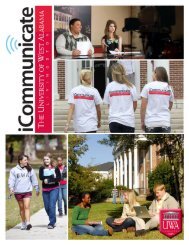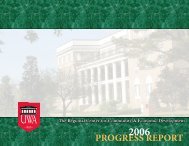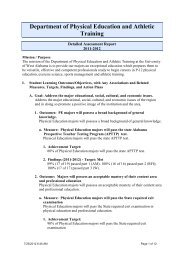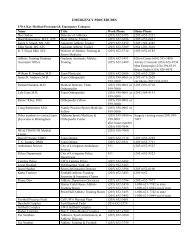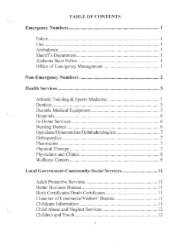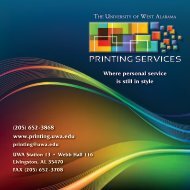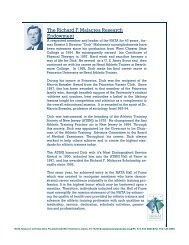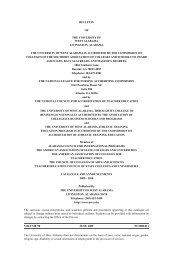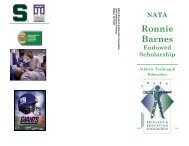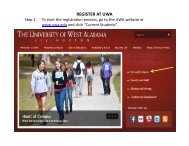table of contents - UWA Athletic Training & Sports Medicine Center
table of contents - UWA Athletic Training & Sports Medicine Center
table of contents - UWA Athletic Training & Sports Medicine Center
You also want an ePaper? Increase the reach of your titles
YUMPU automatically turns print PDFs into web optimized ePapers that Google loves.
<strong>UWA</strong> Emergency Action PlanBaseball Emergency Procedures (Tartt Field)1. When an injury occurs, the athletic trainers should go on to the field to evaluate theinjured athlete. If the injury is life threatening, one <strong>of</strong> the athletic trainers should go tothe press box, coach’s <strong>of</strong>fice in the first base field house or use an onsite cellular phoneand activate the local EMS service and inform them <strong>of</strong> the emergency. Also, call thehead athletic trainer or one <strong>of</strong> the senior staff athletic trainers and tell them <strong>of</strong> the injury.He/she should then report back to the attending athletic trainer.2. While one athletic trainer is enacting the EMS system the attending athletic trainer shoulddo a primary survey and check the level <strong>of</strong> consciousness, if possible, or if the case <strong>of</strong> ahead or spinal injury hold c-spine and wait. After the non-attending athletic trainer enactsthe EMS system and has reported to the attending athletic trainer, he/she should help theattending athletic trainer do a primary survey and/or a secondary survey on the athlete.When that is complete the non-attending student athletic trainer should go and make surethat the ambulance has easy access to the field and that all necessary gates are open viathe established EMS route.3. The attending athletic trainer must be aware that the athlete could go into shock at anytime after an injury, so it is very important that the athletic trainer be able to recognize theearly signs <strong>of</strong> shock and be able to manage it. The athlete should not be moved unlessabsolutely necessary.4. When the ambulance arrives at the field and the EMT's approach the athlete, the attendingathletic trainer should give them all <strong>of</strong> the information gathered such as, the mechanism<strong>of</strong> injury, vital signs, time <strong>of</strong> injury, and progressing level <strong>of</strong> consciousness. When theambulance is preparing to leave one <strong>of</strong> the athletic trainers should have a copy <strong>of</strong> theathlete's insurance and brief medical outline and leave with the athlete to go to thehospital.Location <strong>of</strong> all phonesPhones for emergency actions are available for the following sports at the following locations inthe event that an onsite cellular phone is not accessible:1. If a cellular phone is available it can be used at any location on campus to enact theEMS by dialing 9112. Tartt Baseball Field: Phone access is located in the Baseball Press Box, behind homeplate or in the coaches’ <strong>of</strong>fices, 2 nd floor above the 1 st base dugout.74




